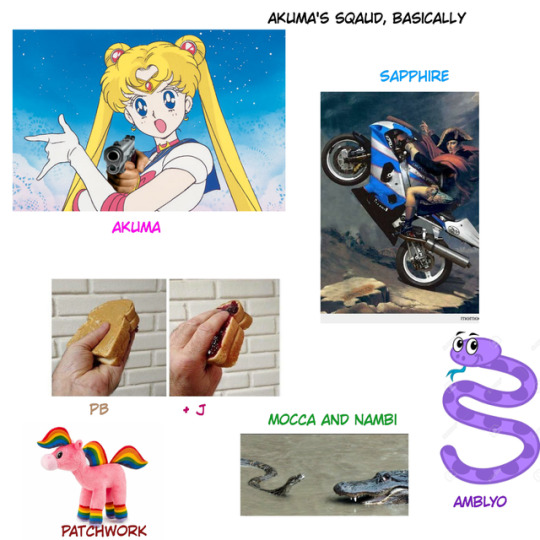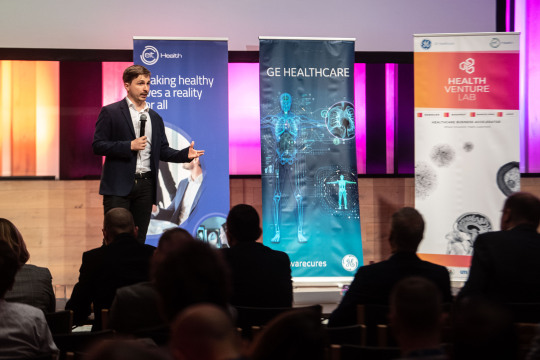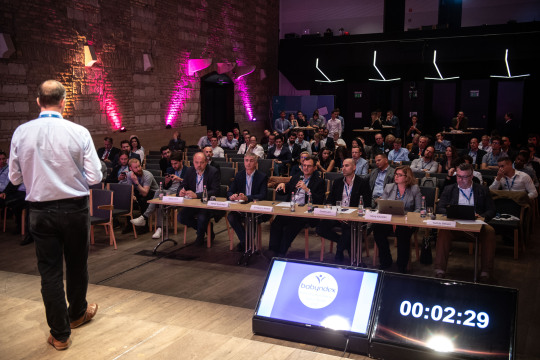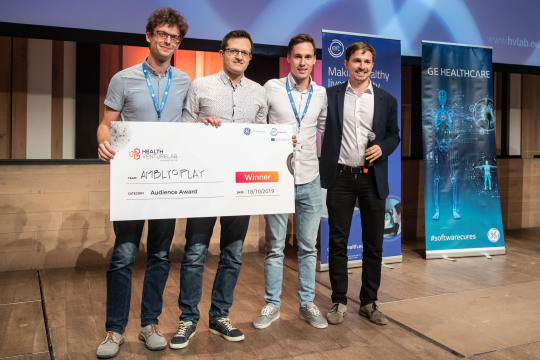#amblyo
Explore tagged Tumblr posts
Text
Navigating Eye Health: Understanding Lazy Eye, Digital Strain, and Effective Treatments
In our increasingly digital world, where screens dominate our daily lives, our eyes often bear the brunt of this technological revolution. From the early stages of life to adulthood, issues like lazy eye (amblyopia), digital eye strain, and squint eyes (strabismus) have become prevalent concerns. However, with awareness and effective treatments, managing these conditions is possible. In this blog, we’ll delve into each of these topics, shedding light on their causes, symptoms, and potential treatments.
Understanding Lazy Eye:
Lazy eye, medically known as amblyopia, is a common condition that typically develops in childhood. It occurs when one eye has weaker vision than the other due to abnormal visual development during infancy and early childhood. This condition often goes unnoticed because the stronger eye compensates for the weaker one, leading to a lack of coordination between the eyes.
Symptoms of lazy eye may include:
Blurred vision in one eye.
Poor depth perception.
Squinting or shutting one eye.
Difficulty with tasks requiring depth perception, such as catching a ball.
Treatment for lazy eye usually involves:
Corrective eyewear: Glasses or contact lenses may help correct refractive errors and improve vision.
Vision therapy: Eye exercises and activities aimed at improving eye coordination and strengthening the weaker eye.
Patching: Covering the stronger eye with a patch to encourage the weaker eye to work harder and improve vision.
Lazy Eye Treatment for Adults:
Although lazy eye is often associated with childhood, it can also affect adults, albeit less commonly. Adults with lazy eye may experience similar symptoms as children, but the condition is usually more challenging to treat due to the decreased neural plasticity of the brain.
Treatment options for lazy eye in adults may include:
Vision therapy: Similar to the approach used for children, vision therapy can help improve eye coordination and visual acuity.
Prism glasses: These specialized glasses can help correct alignment issues and improve binocular vision.
Surgery: In some cases, surgery may be necessary to correct underlying structural problems in the eye or to realign the eyes.
Digital Eye Strain and Computer Vision Syndrome:
With the proliferation of digital devices, digital eye strain, also known as computer vision syndrome (CVS), has become increasingly prevalent. Spending extended periods in front of screens can lead to a range of symptoms, including:
Eye strain and fatigue.
Headaches.
Blurred vision.
Dry eyes.
Neck and shoulder pain.
To alleviate digital eye strain, consider the following tips:
Take regular breaks: Follow the 20–20–20 rule — every 20 minutes, look at something 20 feet away for at least 20 seconds.
Adjust screen settings: Optimize screen brightness, contrast, and font size to reduce eye strain.
Use proper lighting: Ensure adequate lighting in your workspace to minimize glare and reflections on screens.
Blink frequently: Blinking helps lubricate the eyes and reduce dryness.
Squint Eye Treatment:
Squint eyes, or strabismus, is a condition characterized by misalignment of the eyes, causing them to point in different directions. This misalignment can be constant or intermittent and may result from problems with the eye muscles or nerves controlling eye movement.
Treatment for squint eyes may include:
Prescription eyewear: Glasses or contact lenses may help correct refractive errors that contribute to squinting.
Vision therapy: Exercises aimed at improving eye coordination and strengthening eye muscles.
Surgery: In cases where conservative treatments are ineffective, surgery may be recommended to realign the eyes and improve alignment.
Conclusion:
In conclusion, while lazy eye, digital eye strain, and squint eyes pose significant challenges to eye health, effective treatments and preventive measures are available. Whether you’re dealing with childhood amblyopia, adult lazy eye, digital strain, or squint eyes, it’s essential to seek timely evaluation and treatment from an eye care professional. By understanding these conditions and implementing appropriate interventions, we can safeguard our vision and mitigate the impact of modern-day challenges on eye health.
#lazy eye treatment#lazy eye treatment for adults#Digital eye strain#Computer Vision Syndrome#Squint Eye Treatment
0 notes
Text








did someone say: out of context oc memes?
#my ocs#my art#god now i gotta tag em all#slasher#dr. sorsa#akuma#saphir#i changed her name to that after making dat pic#amblyo#pb and j#patchwork#nambi and mocca#thunderscream#ziminiar#rayvynne#lust#greed#fernoss
1 note
·
View note
Text
A Competitive Ecosystem that Drives Health Innovation in Europe
When it comes to health technologies, innovation is the main driver of industry dynamics. Characterized by heavy investment and exponential increase in pace and scale, emerging innovation is also supported by advances in digital technologies. This environment creates growing opportunities for startups to reimagine traditional solutions and improve healthcare overall. In Europe alone, almost 14 000 Medtech solutions were filed with the European Patent Office (EPO) in 2018, showing the strongest growth among the top ten fields recorded in life sciences, combined growth in pharmaceuticals and biotechnology totaled 13%.
But how many of these innovative ideas have the right product-market fit? How can European innovation be enhanced to translate innovative technologies into successful businesses?
See how Health Venture Lab, power by GE Healthcare and EIT Health helps great ideas work towards market success.

Health Venture Lab Demo Day 2019 source:GE
Budapest-based Health Venture Lab (HVL) is an accelerator program dedicated to the professional growth of healthcare-based businesses. HVL helps European startups with a working prototype gain business development knowledge and broaden their global network.

Szemerey Daniel, Director of Health Venture Lab at Demo Day source:GE
“What is unique for Health Venture Lab is the combination of deep industry knowledge and the community. A lot of startups come in here without understanding how they can commercialize their product that they have developed. HVL can help them understand the path of a customer, how to profile them and how to make them a recurring customer” ��� says Dániel Szemerey, director of Health Venture Lab.
But in many cases, a lack of adequate funding is an insurmountable barrier for a startup’s success. To help overcome this challenge, HVL is creating the Capital Community, a smart money platform which enables businesses who successfully participate in the program to connect with serious professionals and trusted, quality investors.

dr. Endre Ascsillán, Vice President of GE in Hungary source: GE
“Budapest-based Health Venture Lab is dedicated to the professional growth of healthcare focused businesses. Based on HVL’s success and its professional expertise, the accelerator program will now be complemented by the Capital Community. The smart money platform enables investments combined with professional and business expertise to provide a solid financial background for long-term business development. We are extremely proud of the success of participating startups and want to support our alumni in the long run” – said Endre Ascsillán, Vice President of GE at the HVL Demo Day pitch competition, when the Capital Community was announced.
The goal of the program is to create a comprehensive and competitive ecosystem built around GE Healthcare that enhances and accelerates European need-based innovation, involving government, industry, academia and potential investors.
“As an investor I could say that this year's startup community is very strong. I have seen over the past few months how they have matured and how they managed to shift their focus from the innovation to the financing platform of their companies. I have met exciting teams working on high intellectual value and innovation with great potential for growth. It is great to work with these startups because they listen to those that represent investors and those who represent investors’ opinions - says Ilona Kecskés, investment banker and leader of the Smart Money Platform project.
The 23 participating teams came from 16 different countries, including Norway, Austria, Slovakia, Slovenia to Bulgaria, to name a few. Startups worked on IoT, hardware/software platforms and medical imaging/AI topics alongside professional executives. After the 6 months intensive training and preparation, they pitched their products and services to a professional jury and to a wider audience, venture capital investors and participants of the innovation ecosystem.

Pitching in front of the expert jury. source: GE
From left: Attila Ferik (GE Healthcare), János Gyarmati (GE Healthcare), Enrique Shadah (MIT), Ernest Lara (MIT), Ilona Kecskés (HVL Capital Community), Tamás Békási – EIT Health
“As a jury member at the Demo Day startup competition, I was impressed by the level of companies that HVL attracts from all over Europe. I believe HVL’s contribution towards building a strong innovation community is valuable because of its focus on providing strategic guidance to venture teams tackling hard problems in healthcare. Strong teams attract investors who seek to support innovation in healthcare. Thus, the role of HVL as a community builder in the ecosystem is vital” – said Enrique Shadah, MIT, Venture Relations expert at MIT IMES LinQ Program for Biomedical Innovation and member of the HVL jury.
The participants agree as well.
“During the program we doubled our revenues but also met a lot of valuable people. It’s a perfect mix of industry insiders, people who are enthusiastic about innovations and people who really know how to train other people.” – says Lech Ignatowicz from Biopromic.
In partnership with EIT Health, the program helps to deliver ambitious health ideas that can revolutionize the future of healthcare through intensive workshops, professional presentations and personalized consultations and networking opportunities.
“EIT Health, as the largest healthcare innovation network in Europe, provides support for Health Venture Lab participants in 3 main areas: personal -, network- and financial growth at international level. The “quality stamp” of EIT Health and Health Venture Lab provides a fast track to get the attention of the investors, making funds available easier and faster for the young talents. We are proud to see how much the participating teams have developed their business performance during the program and are now ready to enter the healthcare market.” - added Balázs Fürjes, Managing Director, EIT Health InnoStars.
Congratulations to all participants who graduated from the HVL program. It was a tough competition!
Awards for this year’s pitch competition went to:

Most Disruptive Product Award
Medicsen – from Madrid provides a closed-circuit system for the intelligent management of diabetes, the first non-invasive artificial combining non-invasive drug-delivery with mobile-AI tech.

Most Promising Product Award
Biopromic – from Stockholm enables simple and rapid point of care test for infectious diseases by increasing sensitivity over 25 times, similar to a “pregnancy test" like device.

Audience Award
Amblyo Play – from Slovenia provides a vision therapy solution for children with visual problems such as lazy eye or strabismus, that is conducted daily at home through playing interactive engaging games.
HVL participating teams:
IOT
Dignisens http://www.dignisens.com/
Studio Rebus https://www.silvermonitor.care
Vimely AI Lab http://www.wedonthave.hu
Stressless SRL http://mytully.com/
Industrial Analytics doo http://ianalytics.eu
Heuristik http://www.heuristik.tech
Hardver
Slimmingphone SL https://www.nutrexact.com
Lion Healthcare AS http://www.lionhealthcare.no
Ferterex https://www.ferterex.lv
Medicsen https://www.medicsen.com/en
Pharsol https://pharsol.com/
Biopromic AB http://www.biopromic.com/
Software/Platform
CUREStoken https://www.curestoken.com/
OncoChain https://oncochain.com/
Ascendio Techvision SRL https://imfine.ascendio.tech/
DrPort Europe http://drport.hu/
Smart Optometry https://www.amblyoplay.com
DokiApp https://www.dokiapp.hu/
BabyIndex https://babyndex.eu
Epidy Health Research https://epidy.com
Medical Imaing/AI
S-Case http://www.scase.io
Vitrolink https://vitrolink.com
Almond IVS https://cellari.io/
0 notes
Link
The study of origin of word is known as etymology.Most of the ophthalmic terminology is derived from Greek and Latin words. Most probably Hippocrates (460-370 BC) was the first to use specific ophthalmic terms that we are still using now a days.He has been credited for using the terms like amblyopia, hippus, nystagmus & phthisis. Similarly terms like canthus, exophthalmos,glaucoma and leukoma are thought o be the contribution of Aristotle (384-322 BC). It was Galen (13 l-201 AD) who used the terms like chalazion, chemosis, iris, mydriasis, pterygium, strabismus and trichiasis. - See more at: http://www.eophtha.com/eophtha/Gallery/words.html#sthash.pvfu7oPw.dpuf
Canthus= Greek word “kanthas” = angle Levator palpebrae superioris = In Latin, “levator” = to lift, “palpebrae” = an eyelid, superioris = upper Caruncle = Latin word means flesh. Plica semilunaris = Latin word “Plicare” = to fold, “semilunaris” = half moon. Tarsus = Greek word means flat, Ancient greeks used to call various flat object as tarsus- suchas wing of bird, blades of sword. Chalazion= A Greek word which means “hailstones”. Papilla= A Latin word means elevation Punctum= A Latin word means point Lacrima = Latin word for tear Conjunctiva = “conjoin” = to join = as this structure (mucous membrane) joins eyeball to the lids. Pterygium = In Greek means wing (of a butterfly) Pinguicula = Greek “ pinguis” = fat Cornea = “Kerato” or Latin " cornu" means horn like. Ancient greeks used to believe that cornea is derived from thinly sliced horn of animal. Choroid= from greek word “chorion” Aqueous = Latin word for water Acanthamoeba= Greek akantha - thorn, spine; amoibe – change Humour = Latin “humour” = moist. Gonio= from greek means corner Scopy = means examination Sclera = Greek “scleros” = hard (“epi” = upon) Lamina cribrosa = Latin ‘cribrum’ = sieve Uvea = Latin word “uva” = a grape, Why a grape? Well, the idea was that, if the stem is removed from a grape, the hole looks like the pupil and the grape the eyeball. Iris = Greek word “iris” = rainbow,(a greek goddess) Pupil = Greek “pupa” = a small doll like figure. Zonule = both greek & latin word means belt or ring Coloboma = greek word means curtailed or mutilated Vitreous = Latin “vitreous” means glass Retina = latin = net Macula lutea = Latin “macula” = a spot, “lutea” = yellow. Fovea centralis = latin for central small pits/depression Optic Chaisma= from greek word chi or ? ,which means crossing ( greek ? was given Galen, famous greek physician) Lat. Geniculate body = Latin “genu” = knee (because of its knee shaped structure) Focus = Latin word means fireplace, as fireplace was the central point of any room in ancient times. Emmetropia = Greek “em” = within, “metro’ = measure & “opia” = eye. Acuity= Latin acuo - to sharpen (similar word of origin acupuncture,acute,just note the use of Acuo) Hypermetroopia = Greek “hyper” =beyond, “metro” = measure, “opia” = eye. Myopia = Greek “my” = close & “opia” = eye Aniseikonia= Greek “an” = not, “iso” = equal & “eikon” =images Aphakia = Greek “a” = Absent, “phaco” = Lens Presbyopia = Greek “presbyo” = old, “opia” = eye Spectacle = Latin “spectaculum” = show Keratoconjunctivitis Sicca = Latin sica = dryness. Herpes= Greek “herpes” = creep, (metaherpetic keratitis , “meta” = after) Corneal dystrophy = Greek “dys” = defective, “trophy” = nourishment Corneal guttata =Latin “gutta” = drop Glaucoma = Greek “glaukos” = bluish gray Buphthalmos = greek “buph” = ox Applanation = Latin “ ad planare” = to flatten Tonography = Greek “tonos” = which can be stretched, “graphos’ = write. Strbismus = Greek “strabismos” = twisted Epicanthus = “Epi” =upon, canthus = angle. Orthoptics= “orthos” = straight & “ops” = eye. Amblyopia = Greek “amblyo” = dull/lazy, “ops” = eye. Rhegmatogenous = Greek “rhegma” = hole, Retinoschisis = Greek “schisis” = to split Arteriosclerosis = Greek “scleros” = hard, Latin “osis” = full of. Exudates = Latin “exe” = out, “sudare” = to sweat Neovascularisation =Greek “neo” = new. Circinate retinopathy= Latin, circum =circle Vitelliform degeneration = Latin “vitellus” = egg yolk Angioid streaks = greek “angi” = vessels Tapetoretinal Degeneration = Greek “tapetum” = carpet Xanthelasma = Greeks “xanthus” = yellow “elamos” = a metal plate. Hemangiomas = Greek “haima” = blood “angioma”= tumor of vessels Leukocoria = Greek “leuko” = white “kore” = pupil. Microaneyrysm = Greek “aneurysma” = a swelling. Amaurosis= Greek "amauros" means dark and "osis"- condition Atropine= Greek "Atropos" = undeviating; one of the three Fates, fabled to cut the thread of life”(because of the lethal nature of the plant Atropa belladonna) Bombe = French "Bombi" means rounded, bulging Exophthalmos = Greek, ex = out of, ophthalmos = eye Optic nerve = Greek “optikos” = an eye. Occipital area = Latin “oc” =back of, “caput”=head. Trigeminal nerve = Latin “trigeminus” = triplets. Trochlear nerve = Latin word means pulley. Ophthalmoplegia = Greek “plegia” means paralysis. “ec” = out “tomy” = to cut “Ectomy” = to cut out Cataract = Greek "katarrhakies" - a downrushing means something that rushes out like a waterfalls Haptics = Greek “haptics” = to lay hold of Dellen= plural of Dutch delle - low ground, pit Dendrite= Greek dendron – tree Diopter= Greek dioptra - leveling instrument Drusen= plural of German druse – bump Hippus= Greek hippos - horse (spasmodic movements of the iris fancifully suggesting the galloping of a horse) Sarcoid= Greek sarx - flesh; - eidos - resemblance Pannus= Latin pannus - cloth Schisis= Greek schizo - to cleave or split, to separate (hence schizophrenia) Scintillans= Latin scintilla – spark Xerosis= Greek xeros – dry Luxated = Latin word means dislocated. Keratome = greek “tome” = to incise. Blepharoplasty = Greek “blepharo” = eyelids. Dacryo = Greek “Dakryon” = tear. Entropion = “en” = in, “tropia” = to turn. Ectropion = “ec” = out, “tropia” = to turn - See more at: http://www.eophtha.com/eophtha/Gallery/words.html#sthash.pvfu7oPw.dpuf
8 notes
·
View notes
